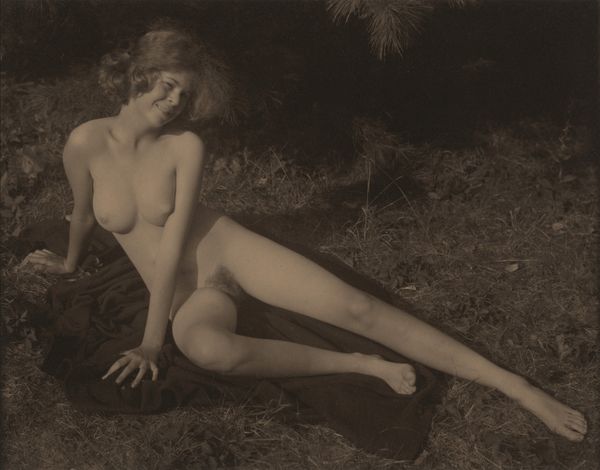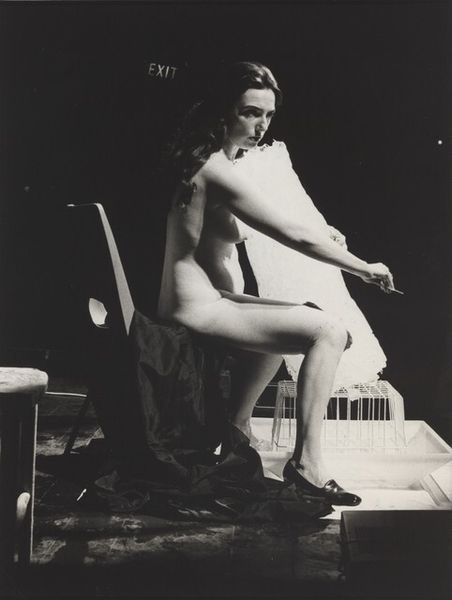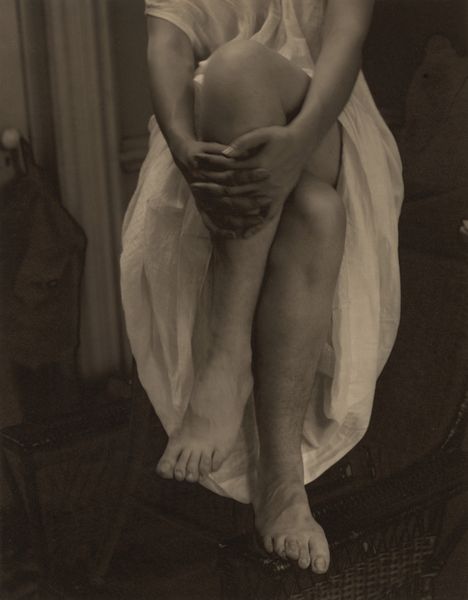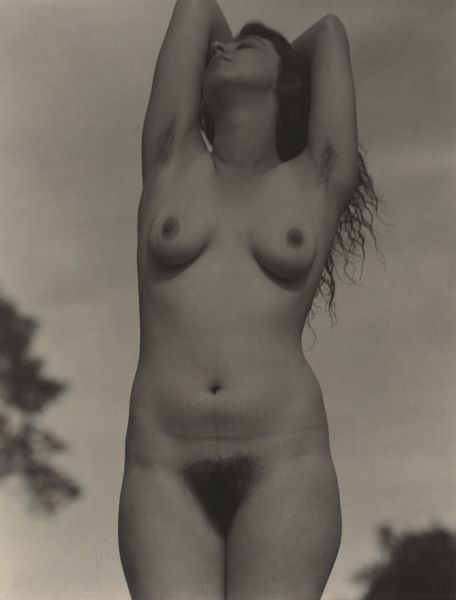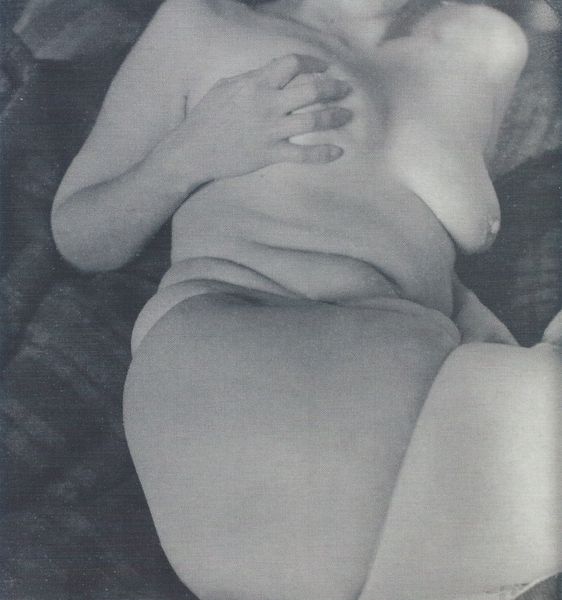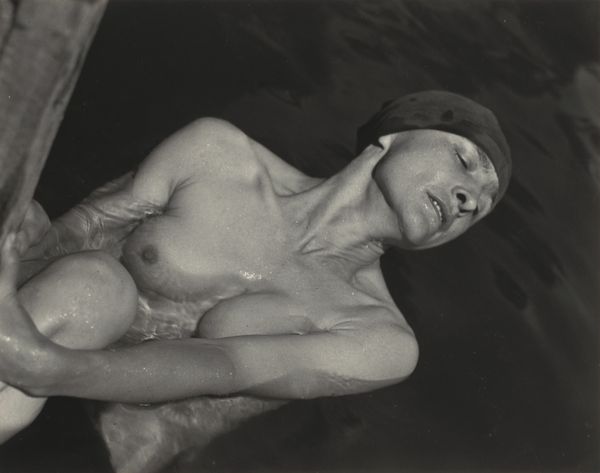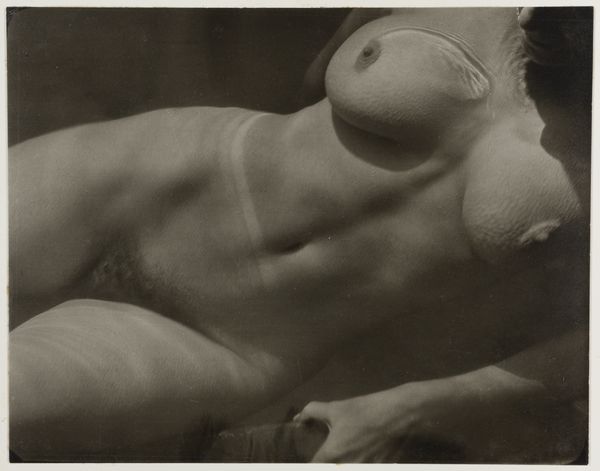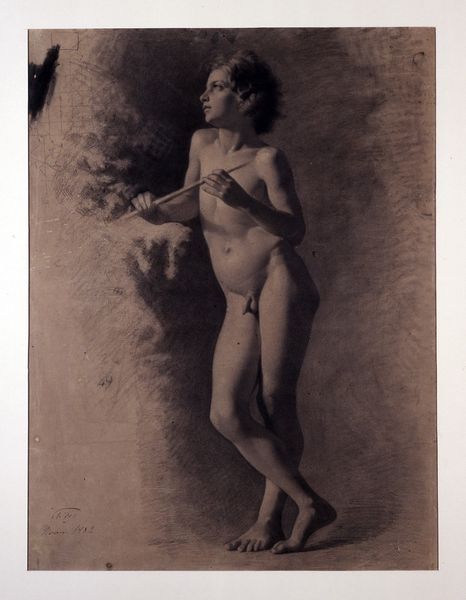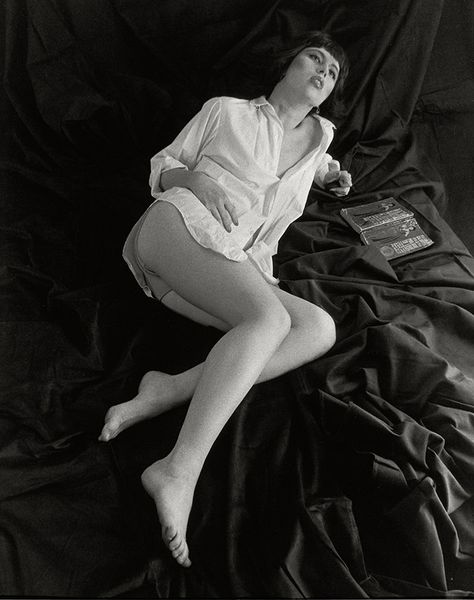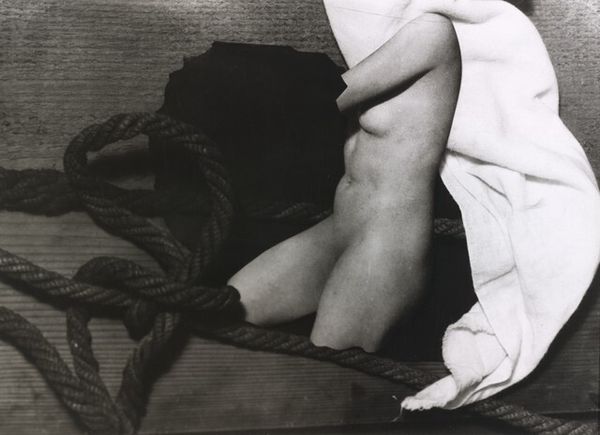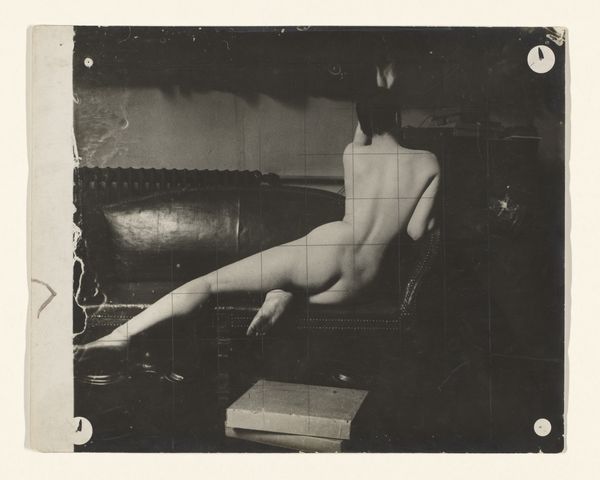
Dimensions: sheet (trimmed to image): 9.2 × 11.7 cm (3 5/8 × 4 5/8 in.) mount: 33.9 × 27.5 cm (13 3/8 × 10 13/16 in.)
Copyright: National Gallery of Art: CC0 1.0
Editor: This gelatin-silver print, “Rebecca Salsbury Strand” captured in 1922 by Alfred Stieglitz, strikes me with its almost joyful serenity. She reclines, partially submerged in water, her smile seeming genuinely free. What is your interpretation of this work? Curator: That 'joyful serenity' grabs me too. I mean, look at the way the light dances on the water, blurring the lines of her form. Stieglitz wasn't just taking a picture, was he? He was evoking a feeling, a moment of pure, uninhibited… being. Do you feel that the stark contrast and the monochrome enhance this intimacy, almost as if stripping away distractions? Editor: Definitely. The black and white palette focuses my attention, as if whispering instead of shouting. I hadn’t considered the intent so deliberately, I mostly noted his composition style. Curator: The 'whispering', I love that. Because that’s what pictorialism did – tried to pull photography away from being purely documentary towards being art that evoked emotional response like paintings. A bit like music in stillness if you catch my drift. Consider, too, how Rebecca, the subject, was also an artist herself and Stieglitz's partner at the time. Does that layer more into our reception? Editor: That does change things! Knowing their relationship and Rebecca's own artistic sensibility… it adds another layer of understanding, or at least invitation. It isn't just a candid snapshot; it's a collaborative exchange of artistry, of gazes. Curator: Precisely! The photograph becomes this intimate dance. Like a conversation frozen in silver. Stieglitz captures more than just her image; he captures something about their bond, that era of modern art, a sliver of truth refracted through his particular artistic lens. Editor: I feel like I went from just seeing an artwork, to knowing its heart. It's all about the layers! Curator: Isn't it always? And that’s the best part, there's no absolute definition about what art is, but infinite angles on meaning.
Comments
No comments
Be the first to comment and join the conversation on the ultimate creative platform.

